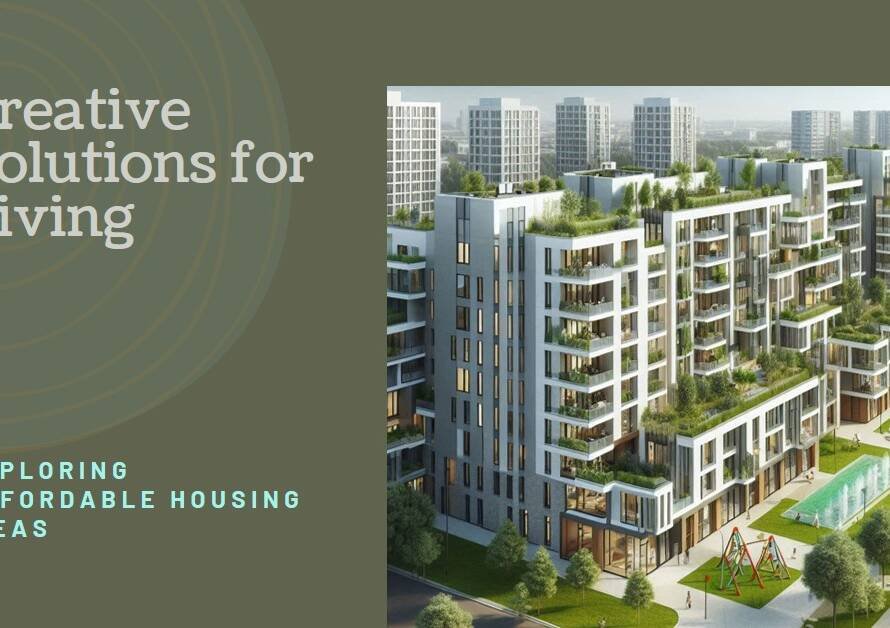
Table of Contents
1. Classic Realism: Timeless Elegance in Architectural Representation
Photorealistic Classic realism in architectural visualization emphasizes precision, detail, and a faithful representation of real-world materials, lighting, and spatial configurations. This style aims to create images that closely resemble photographs, showcasing architectural designs with clarity and accuracy. The focus is on capturing textures, materials, and lighting conditions realistically, highlighting architectural elements such as facades, interiors, and landscapes with meticulous attention to detail.
Transitioning from classic realism to other styles requires a deep understanding of lighting principles, material properties, and composition techniques. Artists often use industry-standard software like Autodesk 3ds Max, V-Ray, and Corona Renderer to achieve lifelike results, leveraging advanced rendering features such as global illumination, physically-based materials, and image-based lighting (IBL) for realistic visualizations.
2. Minimalistic Elegance: Clean Lines and Subtle Details
Minimalistic elegance in architectural visualization embraces simplicity, clean lines, and understated details to create visually striking yet uncluttered images. This style focuses on essential elements of design, emphasizing space, form, and light while minimizing distractions. Neutral color palettes, subtle textures, and strategic use of negative space characterize minimalistic visualizations, allowing architectural features to stand out with clarity and emphasis.
Achieving minimalistic elegance requires a keen eye for composition, balance, and spatial awareness. Artists often employ techniques such as soft lighting, controlled shadows, and minimalist decor to enhance the visual impact of architectural designs without overwhelming the viewer. By emphasizing essential elements and fostering a sense of harmony and tranquility, minimalistic architectural visualizations appeal to modern aesthetics and design sensibilities.
3. Contemporary Fusion: Blending Modern Elements with Artistic Flair
Contemporary fusion in architectural visualization combines modern design principles with artistic flair, resulting in visually dynamic and expressive representations of architectural spaces. This style embraces bold forms, creative use of materials, and imaginative compositions to evoke emotions and convey a sense of innovation and style. Artists often experiment with color contrasts, unconventional textures, and dramatic lighting to create compelling visual narratives that go beyond traditional realism.
Transitioning from classic or minimalistic styles to contemporary fusion requires a willingness to push boundaries, explore unconventional design elements, and inject personality into architectural representations. Incorporating elements of abstraction, surrealism, or stylization can add depth, visual interest, and storytelling layers to visualizations, appealing to audiences with diverse tastes and design preferences.
4. Naturalistic Serenity: Harmonizing Architecture with Nature (Photorealistic)
Naturalistic serenity in architectural visualization focuses on seamlessly integrating built environments with natural elements such as landscapes, vegetation, water features, and natural lighting. This style celebrates the connection between architecture and its surroundings, emphasizing harmony, sustainability, and a sense of tranquility. Artists aim to evoke emotions of calmness, rejuvenation, and environmental consciousness through visuals that showcase architectural designs in symbiosis with nature.
Achieving naturalistic serenity requires expertise in environmental modeling, realistic foliage creation, water simulations, and lighting techniques that mimic natural daylight variations and atmospheric effects. Incorporating biophilic design principles, such as indoor-outdoor transitions, green spaces, and natural materials, enhances the authenticity and appeal of architectural visualizations focused on naturalistic themes.
5. Futuristic Vision: Imagining Tomorrow’s Architectural Landscapes
Futuristic vision in architectural visualization explores speculative and avant-garde design concepts, envisioning architectural landscapes of the future with innovative technologies, unconventional structures, and futuristic aesthetics. This style pushes boundaries, challenges traditional norms, and sparks imagination, presenting architectural designs that reflect bold visions of progress, sustainability, and technological advancement.
Transitioning from conventional styles to futuristic vision requires a forward-thinking approach, creativity, and a deep understanding of emerging technologies, materials, and design philosophies. Artists leverage digital tools, parametric modeling techniques, virtual reality (VR), and augmented reality (AR) to conceptualize and visualize futuristic architectural scenarios with precision and immersive detail. By embracing imagination, innovation, and cutting-edge design principles, futuristic architectural visualizations inspire curiosity, dialogue, and exploration of new possibilities in architectural design and urban planning.
6. Blending Styles: Creating Hybrid Architectural Visualizations
While each style mentioned above has its distinct characteristics and appeal, blending different styles can result in unique and captivating architectural visualizations that resonate with diverse audiences. By combining elements of classic realism with minimalistic elegance, contemporary fusion, naturalistic serenity, or futuristic vision, artists can create hybrid visualizations that strike a balance between realism, creativity, and thematic exploration.
7. Technical Challenges and Artistic Choices
Each architectural visualization style comes with its technical challenges and artistic considerations. Artists must master rendering techniques, lighting setups, material properties, and post-processing workflows specific to each style to achieve desired visual outcomes. Moreover, making informed artistic choices regarding composition, color palettes, camera angles, and narrative elements plays a crucial role in defining the mood, story, and impact of architectural visualizations across different styles.
8. Client Preferences and Project Context
Understanding client preferences, project requirements, and target audiences influences the choice of architectural visualization style. Classic realism may suit projects requiring precise representation and technical accuracy, while contemporary fusion or futuristic vision styles may align with innovative designs or conceptual projects. Collaborating closely with clients, architects, and designers helps align visualization styles with project goals, brand identity, and audience expectations.
9. Evolving Trends and Industry Innovations
The field of architectural visualization continually evolves with technological advancements, industry trends, and creative innovations. Keeping abreast of new rendering technologies, software updates, design trends, and sustainability principles enables artists to adapt and innovate within their chosen visualization styles. Embracing interdisciplinary collaboration, attending industry events, and participating in professional development activities foster growth, creativity, and relevance in architectural visualization practices.
10. Personal Exploration and Artistic Expression


While mastering popular architectural visualization styles is essential for professional growth, allowing room for personal exploration, experimentation, and artistic expression is equally important. Encouraging creativity, curiosity, and a willingness to push boundaries empowers artists to develop unique visual identities, signature styles, and impactful storytelling approaches in architectural visualization. Balancing technical proficiency with creative freedom fosters innovation, authenticity, and fulfillment in the dynamic realm of architectural visualization.



